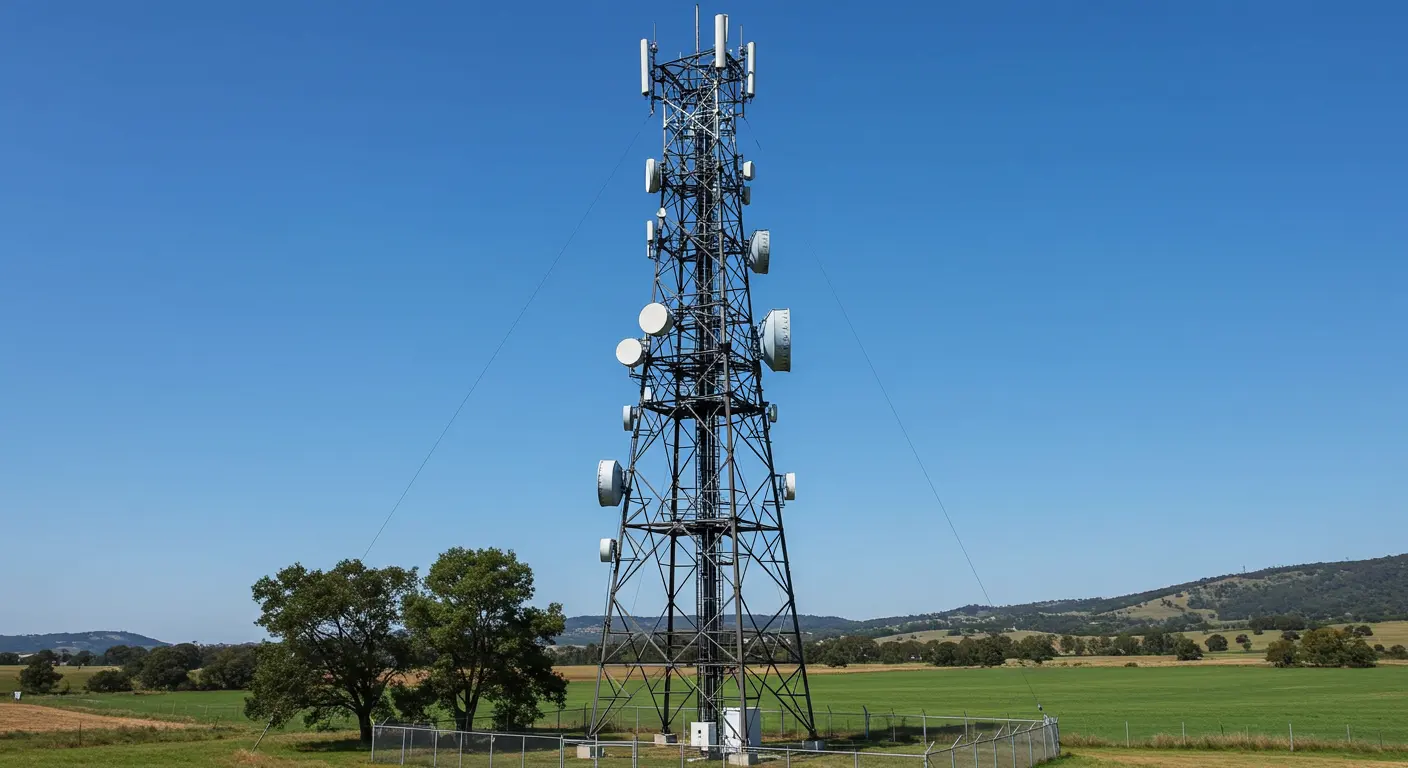Calculated Eurocode National Annex Telecom Tower: Explained
2025-08-26
An All-Established Guide
A well-respected structural design framework in Europe is the Eurocode system. As far as telecom towers are concerned, some calculations may be done based on the calculated Eurocode national annex telecom tower that ensures general rules of Eurocode are adapted to certain country-specific conditions. Telecom masts are the pillar of modern communications. On these tall structures are antennas and equipment that keep the world connected, such as mobile networks and broadcasting. Their development should be precise, technologically prone, and should be able to meet the international standards.
What is the Eurocode National Annex?
Eurocodes are a series of European design codes that deal with all structural types. But since each state possesses individual weather conditions, soil conditions, and seismic conditions, a National Annex (NA) is issued by each state. The National Annex makes the adjustments regarding the general Eurocode rules by stipulating:
Incomplete Safety Factors
- Parameters of wind and snow loads
- The change of temperature
- Seismic regulations
- Materials available for construction in a country
A telecom tower designed in France will meet a marginally different rate of loads when compared with a tower in Germany or the UK, even though the France-based tower will be designed based on the Eurocode principles, just as the other towers.
Design the Floors of the Telecommunications Tower
When calculating a telecom tower based on Eurocode national annex making designers need to take into consideration various types of towers, environmental factors, and a certain level of safety determined by the local legislations. Lattice towers are lightweight in construction and very strong, but require tedious fatigue and wind analysis.
- The main characteristic of monopole towers that are commonly installed in urban areas is space saving, and as such, care must be taken to calculate the foundation sufficiently tightly, as they rely on concentrated loads at the tower base. Guyed masts prove cheaper in rural areas; however, they require larger land spaces, and they must be well designed in terms of the anchor foundation.
- Eurocodes-compliant telecom tower design may be dominated by wind load. The national annex determines the rough wind speed, the terrain type as coastal, forest, or urban, and height correction because taller towers experience higher winds.
- As an illustration, the UK National Annex would utilize a 50-year wind speed, as compared to slightly higher wind pressures in Germany. A 60m lattice tower on the coast could be subjected to 40-50% higher wind annually when compared to the same tower in service inland.
The Role of the National Annex in the Design of the Tower
The National Annex (NA) delivers country-specific adjustments to the Eurocode framework. These modifications mean that the design of the telecom towers is constructed based on local environmental and material factors. Important changes involve
- Partial safety factors for combinations of loads.
- Wind and snow parameters are according to the local climate.
- Temperatures change that affect the structures of steel.
- Seismic zoning regulations in earthquake-prone areas.
- Nationally reached steel and concrete standards of materials.
- Using these factors, engineers are able to make telecom towers safe, reliable, and durable in the respective environment.
Seismic Load National Annex
- In earthquake feeble regions, the Eurocode EN 1998 and local annexes are used.
- Seismic zoning plans vary according to the country
- The Nation annex establishes soil classes, the acceleration coefficients, and the auxiliary demands.
- Towers have to withstand the vertical and horizontal seismic acceleration.

Annex National Safety Structural
The Eurocode National Annex is very crucial in the structural safety of the offshore communication towers in Europe. The purpose of one of its key tasks is to adjust partial safety factors to loads, materials, and the environment. These modifications are necessary since the offshore towers face high wind, wave, and seismic activity, which differ considerably, depending on the area.
Par-Con Safety Factors
The annex at the national level lists particular gamma (gamma) factors of various load categories and various materials:
- Dead Load Factor: This is a consideration of the weight on all permanent construction, including steel and the fixture.
- Live Load Factor: Used on temporary loads such as maintenance personnel, equipment, and loads due to dynamic environmental forces.
- Material Factor, strengths and other properties of materials (e.g., steel, concrete) are variable due to variability in quality and fabrication tolerances.
Firewall on Tower Design in Offshore
Employing these safety factors assures there is stability and reliability in terms of communication towers offshore under unpredictable circumstances. Using this information, engineers can be certain of designs that do not overload the structures with the effects of high wind, waves, and tremors. Adequate use of the Eurocode National Annex safety factors leads to long life and soundness, as well as adhering to the European requirements.
Calculated Eurocode National Annex Telecom Tower
The simplified screenshot of a calculation for the Eurocode national annex telecom tower:
- Height: 50m
- Basic wind speed(v b): 25 m/s (in local annex)
- Terrain category Urban: (z0 = 1m)
- Surface area of the top area exposed: 20m 2 antennas
Steps:
1. Use the EN 1991-1-4 pressure calculation procedure for wind pressure.
2. with annex-specific terrain factor.
3. Apply partial safety factors 6Q.
4. Analyzing buckling stability based on the EN 1993-3-1.
5. Check foundation area with EN 1997 (geotechnical).
This provides the tower with compliance with the local regulations regarding the design of buildings and the standards of Eurocode.
Advantages of the Application of the Eurocode National Annex in Telecom Towers
Eurocode National Annex design of telecom towers is advantageous in that it gives several strategic benefits to the engineers and developers of infrastructure in Europe. Such benefits make towers not only reliable and safe but also optimized to protect the local environment.
- Consistency
The Eurocode provides a common base structure pursued in all European nations, such uniformity enables engineers to design the same way to achieve compliance without necessarily having a single cross-border project.
- Adaptability
National annexes modify Eurocode guidelines to the wind, snow, seismic, and soil characteristics of a country. This will guarantee that the design of the tower matches the distinctive difficulties of the site, instead of being based on some generalized assumptions.
- Safety
National annexes allow the mass-specific design as well as the material strengths that increase the stability of telecom towers, carved by the extreme weather and varying natural forces.
- Efficiency
Engineers may improve the foundation of the structures and buildings, thus avoiding over-design, because of the possibility of preventing the additional wastage of resources, time, and money without jeopardizing structural strength.
- Global Acceptance
Nationally adjusted Eurocode standards are internationally recognized. This has made it easier to invest, to partner, and certify telecom infrastructure projects across the globe.
Conclusion
Telecom towers must be designed and calculated Eurocode national annex telecom tower national annex to provide efficiency, safety, and compliance. Nation-by-nation incorporation of the Eurocode framework is adapted to the unique setting, i.e., wind, snow, seismic, and soil conditions, being incorporated properly. Utilization of such standards makes towers stronger and able to withstand time, and adheres to the European regulations. Visit XY Tower.

Hey, I’m Chunjian Shu
"X.Y. Tower: Reliable, innovative solutions for high-quality towers and electrical equipment with professional service.
